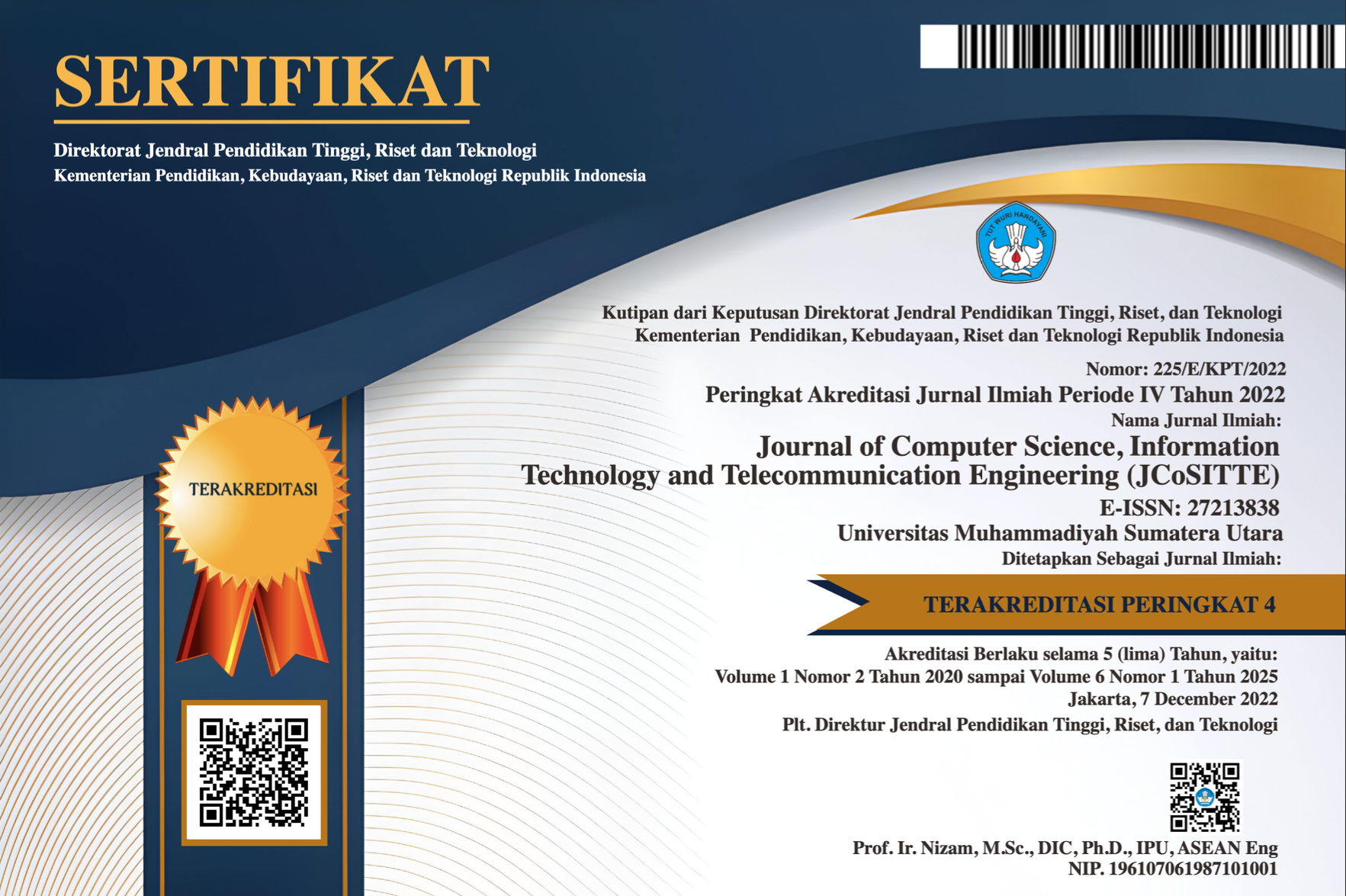Technology-Based Learning Innovation in Geometry Transformation Using the Desmos Application to Enhance Students' Visualization and Academic Achievement
Abstract
This study focuses on the development and implementation of an innovative learning model for geometric transformations by integrating technology through the use of the Desmos application as an interactive instructional tool. Geometric transformation is a fundamental concept in mathematics but is often regarded as abstract and challenging for students to grasp. This research aims to improve students’ conceptual understanding and motivation by providing a dynamic and visual learning environment using Desmos, a user-friendly digital graphing platform. The study employs a development research methodology consisting of stages such as design, implementation, and evaluation of the learning media. Data collected through observations and student feedback demonstrate that incorporating Desmos in the learning process significantly enhances student engagement, simplifies the visualization of complex geometric concepts, and creates a more enjoyable and effective learning experience. The findings suggest that technology-based innovations like this can serve as effective alternatives to traditional teaching methods in mathematics education, particularly for teaching geometric transformation material.
Keywords
Full Text:
PDFReferences
J. Schoenherr, A. R. Strohmaier, and S. Schukajlow, “Learning with visualizations helps: A meta-analysis of visualization interventions in mathematics education,” Educ Res Rev, vol. 45, p. 100639, Nov. 2024, doi: 10.1016/j.edurev.2024.100639.
C. Sabena, M. Schäfer, M. Fetzer, H.-Y. Hsu, and Z. Yuan, “Visualization in the Teaching and Learning of Mathematics,” World Scientific Pub Co Pte Ltd, Jun. 2024, pp. 422–426. doi: 10.1142/9789811287152_0047.
W. Lin, H. Yin, J. Han, and J. Han, “Teacher–student interaction and chinese students’ mathematics learning outcomes: The mediation of mathematics achievement emotions,” Int J Environ Res Public Health, vol. 17, no. 13, pp. 1–17, Jul. 2020, doi: 10.3390/ijerph17134742.
M. R. Ridwan, S. Hadi, and Jailani, “IDENTIFICATION OF EFFECTIVENESS MEASUREMENTS AND BIAS PUBLICATION OF LITERATURE RESULTS STUDY: A COOPERATIVE LEARNING MODELS ON MATHEMATICS LEARNING OUTCOMES OF VOCATIONAL SCHOOL STUDENTS IN INDONESIA,” Journal on Efficiency and Responsibility in Education and Science, vol. 15, no. 3, pp. 189–200, Sep. 2022, doi: 10.7160/eriesj.2022.150306.
F. Umardiyah and M. Q. Zuhriawan, “Aktualisasi Profil Pelajar Pancasila: Pembelajaran Missouri Mathematics Project Berbasis Batik Jombangan Materi Transformasi Geometri,” Kognitif: Jurnal Riset HOTS Pendidikan Matematika, vol. 4, no. 4, pp. 1465–1476, Dec. 2024, doi: 10.51574/kognitif.v4i4.2145.
M. Meadows and J. Caniglia, “That was then this is now: Utilizing the history of mathematics and dynamic geometry software,” 2021, Ismail Sahin. doi: 10.46328/IJEMST.1106.
J. Keilmuan Pendidikan Matematika, I. Maharani, D. Aulia, E. Putri Yani, R. Khoirun Nisa, and S. Halimah Tumanggor, “Penggunaan Aplikasi Desmos dalam Menyelesaikan Persamaan Grafik Trigonometri,” 2024.
B. Nuri, L. Zikriana, and I. Iqbal, “Effectiveness of Desmos Application Integrated with PjBL in Multimedia Mathematics Learning in Terms of Mathematical Literacy Skills,” Jurnal Penelitian Pendidikan IPA, vol. 9, no. 11, pp. 10457–10465, Nov. 2023, doi: 10.29303/jppipa.v9i11.5497.
S. Matsubara, “Running Head: USABILITY ON ONLINE GEOMETRY RESOURCES 1 Learning About Online Geometry Resources: A Usability Study on Website for McKinley High School Teachers.” [Online]. Available: https://sites.google.com/mckinleyhs.k12.hi.us/geometryresources/home
L. Choirun Nisa, A. Riana Isnawati, A. K. Rachmawati, and S. Diyah Miasary, “J U R N A L N U A N S A A K A D E M I K Jurnal Pembangunan Masyarakat (p) Pemanfaatan Desmos untuk Pembelajaran Matematika Interaktif bagi Guru Matematika SMK di Salatiga,” vol. 10, no. 1, pp. 59–72, 2025.
R. Widiyasari et al., “Prosiding Seminar Nasional LPPM UMJ Website: http://jurnal.umj.ac.id/index.php/semnaskat E-ISSN: 2714-6286 Pelatihan Penggunaan Media Digital sebagai Visualisasi Teknologi Pembelajaran untuk Guru SMP.” [Online]. Available: http://jurnal.umj.ac.id/index.php/semnaskat
H. Y. Yunianto and N. Sulistyani, “Pengembangan Media Pembelajaran Berbantuan Desmos Activity Classroom pada Materi Program Linear”.
B. Nuri, W. Isnani, and F. Rizani, “Development of Desmos Application Design Integrated PBL Assisted Liveworksheet Based on Mathematical Literacy in AKM Preperation Efforts,” Jurnal Penelitian Pendidikan IPA, vol. 11, no. 1, pp. 265–274, Jan. 2025, doi: 10.29303/jppipa.v11i1.9940.
K. Muqtafia and H. S. Bintoro, “Pengaruh Model Pembelajaran Discovery Learning Berbantuan Media Desmos terhadap Kemampuan Matematis Siswa,” Kognitif: Jurnal Riset HOTS Pendidikan Matematika, vol. 4, no. 2, Jul. 2024, doi: 10.51574/kognitif.v4i2.1684.
R. Muhammad, M. Hajghassem, and M. Alraee, “Geometry, Art, and Technology: Islamic Geometric Patterns in the Classroom,” Journal of Humanistic Mathematics, vol. 15, no. 1, pp. 317–333, Jan. 2025, doi: 10.5642/jhummath.NDFW1546.
Y. D. Kristanto, “PELATIHAN DESAIN AKTIVITAS PEMBELAJARAN MATEMATIKA DIGITAL DENGAN MENGGUNAKAN DESMOS,” vol. 27, no. 3, 2021, doi: 10.24114/jpkm.v27i3.23908.
F. Setyawan, Y. Dwi Kristanto, and N. Ishartono, “Preparing In-Service Teacher Using Dynamic Geometry Software,” International Journal of Engineering & Technology, pp. 367–370, 2018, doi: 10.6084/m9.figshare.6046931.v1.
I. Shalhi, R. A. Sukmawati, Y. Suryaningsih, H. S. Purba, and M. Pramita, “Pemanfaatan Geogebra dalam Pengembangan Media Pembelajaran Interaktif Berbasis Web pada Materi Transformasi Geometri dengan Metode Drill and Practice,” Computing and Education Technology Journal, vol. 4, no. 2, p. 35, Jan. 2025, doi: 10.20527/cetj.v4i2.13318.
R. Meslita Prodi Tadris Matematika, F. Tarbiyah dan Keguruan, U. Islam Negeri Sulthan Thaha Saifuddin Jambi, J. K. Jambi Ma Bulian, and D. Kabupaten Muaro Jambi, “Pengembangan Bahan Ajar Berbasis Aplikasi Desmos pada Materi Program Linear,” vol. 06, no. 02, pp. 1857–1868, 2022.
B. Chechan, E. Ampadu, and A. Pears, “Effect of using Desmos on high school students’ understanding and learning of functions,” Eurasia Journal of Mathematics, Science and Technology Education, vol. 19, no. 10, 2023, doi: 10.29333/ejmste/13540.
W. Ataide Pinheiro and D. R. Ippolito, “The role of technology in times of crisis: a case study of conceptual gains in desmos geometry lessons,” Pesquisas e Práticas Educativas, vol. 2, p. e202107, Sep. 2021, doi: 10.47321/pepe.2675-5149.2021.2.e202107.
S. Rahmadhani and M. Doly Nasution, “Penggunaan desmos dalam pembelajaran matematika materi program linier sebagai sarana meningkatkan kemampuan siswa,” 2022.
J. George, M. Miheso-O’connor, and G. N. Orado, “Use of Desmos Graphing Calculator in Teaching Geometry and its Effect on Secondary Schools Learners’ Conceptual Understanding, Kiambu County, Kenya”, doi: 10.47772/IJRISS.
Desmos,” 2021. [Online]. Available: https://knightscholar.geneseo.edu/Availableat:https://knightscholar.geneseo.edu/proceedings-of-great-day/vol2020/iss1/8
Y. L. Ningsih, D. Octaria, T. D. Nopriyanti, and J. Jumroh, “Development of a Desmos-Assisted Planar Analytic Geometry Textbook to Support High Order Thinking Skills,” JTAM (Jurnal Teori dan Aplikasi Matematika), vol. 8, no. 2, p. 544, Apr. 2024, doi: 10.31764/jtam.v8i2.20775.
DOI: https://doi.org/10.30596/jcositte.v6i2.25555
Refbacks
- There are currently no refbacks.





.png)

